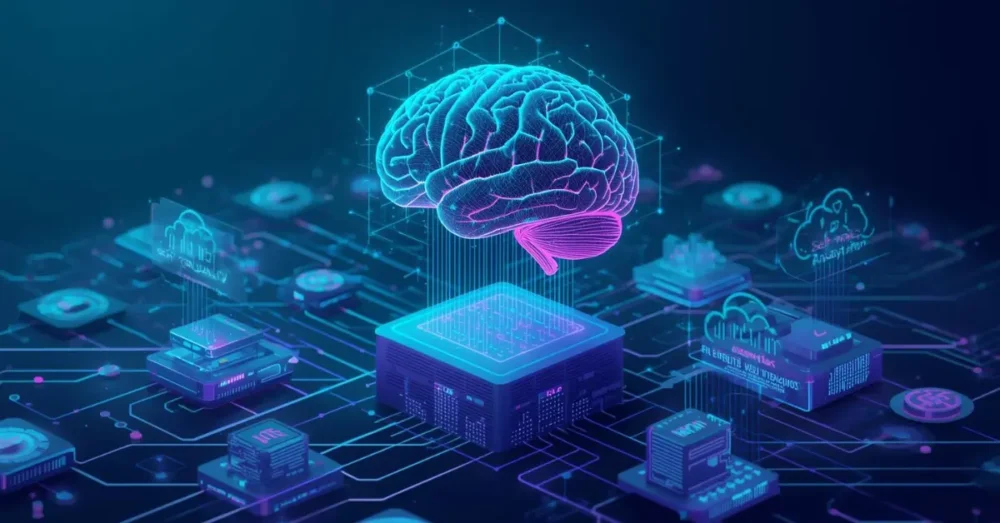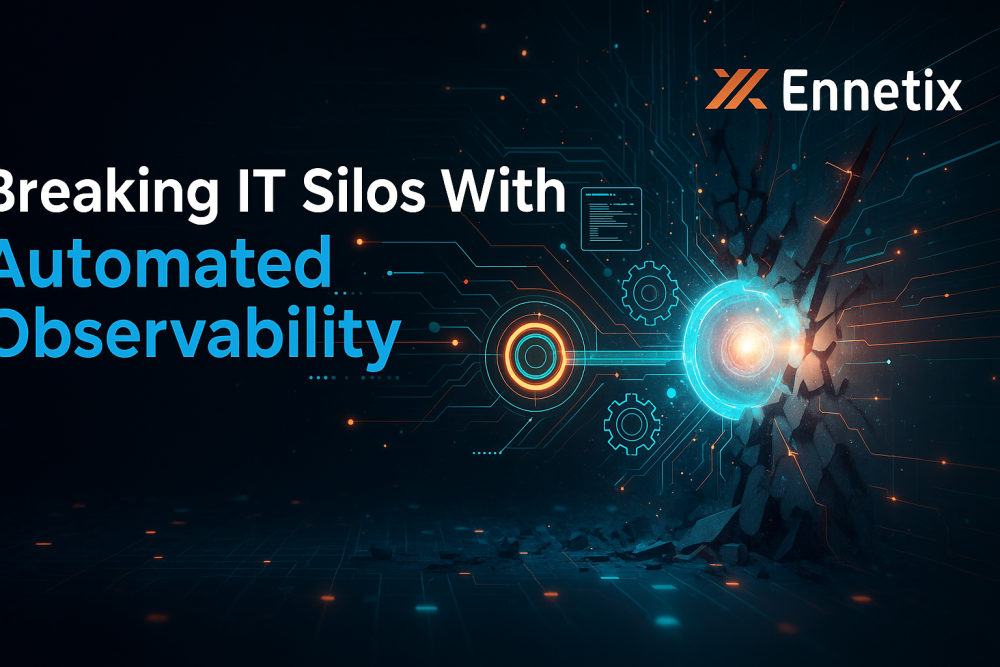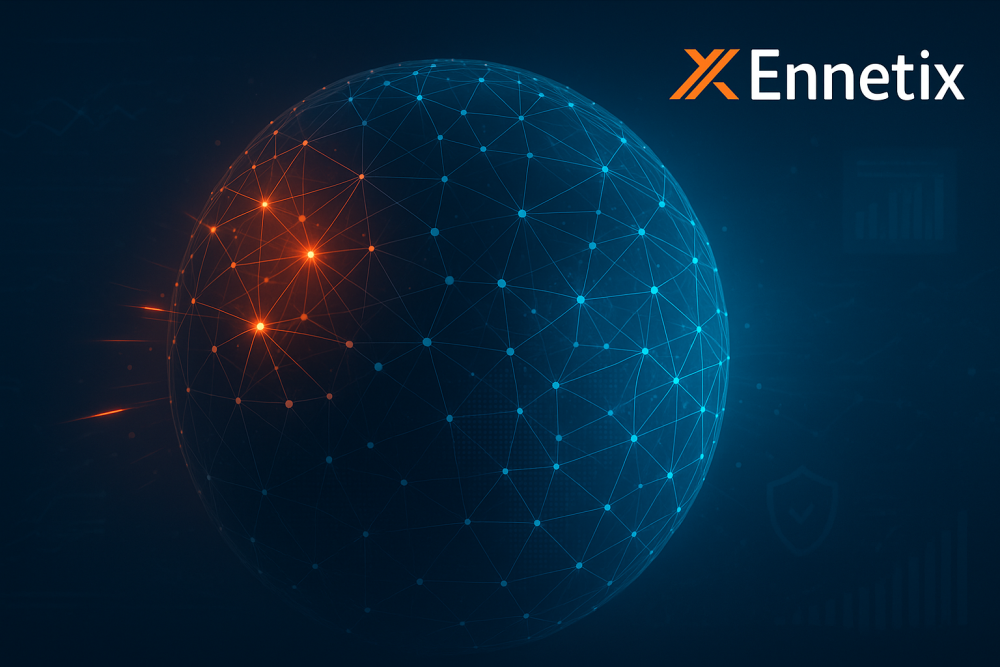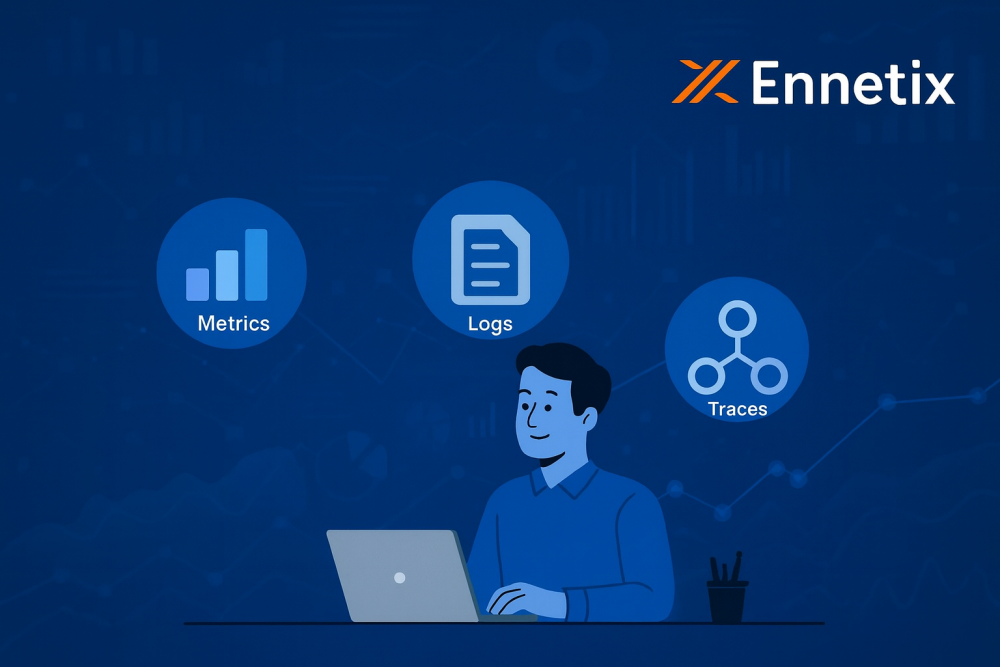
Situational Awareness vs. Threat Intelligence: What’s the Difference and Why You Need Both
August 9, 2025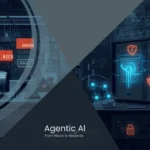
Agentic AI in Observability: What It Is and Why It Will Change IT Ops
September 5, 2025As enterprises across the U.S. face mounting complexity in IT environments, AIOps platforms (Artificial Intelligence for IT Operations) are emerging as a pivotal solution. But as we look ahead to 2026, the stakes are rising—and the expectations are shifting. Organizations no longer want reactive incident management; they’re demanding autonomous IT operations that self-diagnose, self-heal, and continuously optimize performance.
In this blog, we explore the rapid evolution of AIOps, what “autonomous” really means in modern IT, and the five capabilities that AIOps platforms must enable by 2026 to stay relevant.
Why Autonomous IT Operations Are Becoming a Business Imperative
The U.S. tech landscape is evolving toward hyper-connected systems—multi-cloud, hybrid, edge-based, and distributed architectures are the new norm. In such complex ecosystems:
- Manual monitoring becomes obsolete.
- Human-led incident response is too slow.
- Reactive analytics miss anomalies until after the damage is done.
This has led to a shift toward autonomous operations, where systems not only detect but resolve issues without human intervention. According to Gartner, by 2026, over 60% of large enterprises will have moved toward self-healing systems powered by AIOps.
Key Trends Driving the Shift to Autonomous IT
Before exploring the core capabilities AIOps platforms must enable, let’s understand what’s fueling the demand:
- Explosion of Observability Data
From logs and metrics to traces and user experience insights, the volume of telemetry data is growing exponentially. - Talent Shortages in IT Ops and DevOps
With fewer hands on deck, automation is essential to manage complexity and reduce mean time to resolution (MTTR). - AI and Machine Learning Advancements
Breakthroughs in generative AI, LLMs, and graph analytics are enabling smarter decision-making and pattern detection. - Zero Trust & Security Integration
AIOps must now support security observability and policy enforcement to enable secure-by-default operations.
What AIOps Platforms Must Enable by 2026
To power truly autonomous IT operations, AIOps platforms will need to evolve from data aggregators into intelligent, action-driven systems. Here are the five must-have capabilities:
1. Proactive and Predictive Incident Management
Reactive alerting is outdated. By 2026, AIOps platforms must:
- Use AI-powered anomaly detection to predict failures before they happen.
- Leverage historical and real-time data to prioritize incidents by business impact.
- Provide predictive capacity planning to prevent resource bottlenecks.
Keyword focus: predictive analytics for IT and OT, AI-driven incident prevention
2. Automated Root Cause Analysis and Remediation
It’s not enough to detect an issue—AIOps must explain it. Platforms should:
- Apply correlation engines and causal graph analysis to pinpoint root causes instantly.
- Enable automated workflows that trigger self-healing scripts or infrastructure rollbacks.
- Feed insights into DevOps pipelines for long-term fixes.
Keyword focus: automated root cause analysis, AI-powered threat detection
3. Unified Observability Across IT and OT
Enterprises are no longer managing just IT—they’re bridging IT and OT environments in manufacturing, energy, and logistics. AIOps platforms must:
- Deliver end-to-end security monitoring and performance visibility.
- Correlate logs, metrics, and events from both IT systems and operational technology (OT).
- Align with zero-trust security principles to ensure safe and compliant operations.
Keyword focus: unified observability, IT and OT security integration
4. Cognitive Insights and Context-Aware Automation
Context is everything. Modern AIOps platforms must deliver situation-aware decision support by:
- Integrating with CMDBs, topology maps, and user behavior analytics.
- Enabling AI-powered recommendations that factor in business priorities and compliance.
- Supporting chatbot- or LLM-powered interfaces for faster human-AI collaboration.
Keyword focus: situational awareness in cybersecurity, AI-powered IT operations
5. Intelligent Collaboration and Incident War Rooms
AIOps must act as the central nervous system for cross-team collaboration. Key features should include:
- Real-time collaboration dashboards across DevOps, SRE, SecOps, and NOC teams.
- AI-driven incident war rooms that synthesize inputs and suggest next best actions.
- Automatic post-incident reports generated from system logs and resolution steps.
Keyword focus: security automation for enterprise networks, cyber resilience for IT and OT
Why 2026 Will Be a Defining Year for AIOps
With increased cloud-native adoption, AI maturity, and digital transformation mandates, 2026 will mark a tipping point. Organizations will no longer ask whether they need AIOps—but which platform offers the most autonomy, accuracy, and actionability.
Those that invest early in next-gen AIOps capabilities will unlock faster innovation, improved uptime, and tighter IT-security alignment. Those that don’t risk drowning in complexity—and becoming reactive relics in an autonomous world.
Final Thoughts: Are You Ready for Autonomous IT?
Whether you’re a CIO, SRE leader, or network architect, the message is clear: The future is autonomous, and AIOps is the engine. But not all platforms are built equally.
As you evaluate your AIOps roadmap for 2026, focus on platforms that offer:
- Unified observability across your full stack
- Predictive and self-healing capabilities
- Strong IT-OT security convergence
- Scalable automation rooted in context
If you’re building toward resilience and agility, it’s time to rethink how intelligence is embedded into your IT backbone. The rise of autonomous operations isn’t coming—it’s already here.

